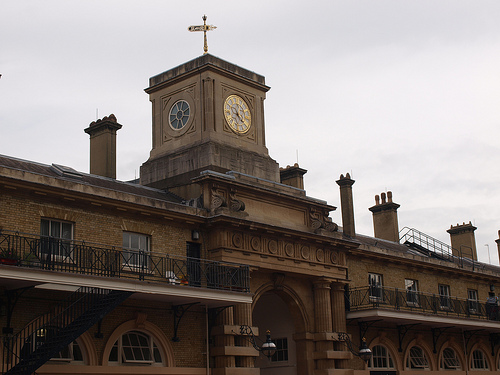The Royal Mews – Buckingham Palace
There are lots of Royal sites in London: impressive houses, stunning Windsor Castle and of course Buckingham Palace itself. However as you walk around in these opulent surroundings all you can feel is the past and you may even find yourself talking in whispers as though you were inside a museum or art gallery. This is where the Royal Mews differs, here history is very much alive, and if you time it right it will be neighing and tapping its hooves on the stable floor.

What to See at the Royal Mews
The Mews offer a real and tangible insight into the operation of the Royal Household; it is the Mews that are responsible for all of the Royal family’s road transport needs. Here you can view all of the vehicles used for state events from the beautiful horse drawn golden coaches of the coronation and royal weddings through to the cars used for modern official engagements.
Other than all of the ceremonial and official transport housed at the Mews it is also home to the immaculate and majestic horses that pull the carriages, and are ridden in ceremonial parades through the city. The horses are mostly Cleveland Bays, the only British breed of carriage horse, which are used to draw the majority of the carriages, apart from the one in which the Queen herself is travelling, her carriage is always pulled by a team of Windsor Greys. If you time your visit right you will also get to meet some of these beautiful animals, but bear in mind they could be on duty elsewhere, or out for some well earned rest in the countryside.
A Brief History of the Mews
In 1760 George III moved his collection of carriages and horses to the site of the Mews, to be close to his new house, which was to become Buckingham Palace. An indoor riding school was added in 1764 when the site became known as the Royal Mews Pimlico. In 1820 George IV remodelled the house and its stables into what we regard now as the Palace, with architect John Nash adding the now famous Doric arch at the entrance to the Mews. Two further stables were added providing room for up to 54 horses, and coach houses on the opposite side, as well as rooms for all of the riding tack and harnesses. Nash’s work was completed in 1825 and since then successive monarchs have made their own adaptations and changes to ensure that the buildings remain as up to date as possible.
It was Queen Victoria who made the palace not only home but an official Royal residence. With this meaning an increased workload for the Mews Prince Albert commissioned the building of a forge on the site and a royal blacksmith was put in place. This was soon followed by Queen Victoria setting up a riding school in the stables for the children of the servants who worked at the mews, all at her own expense.

